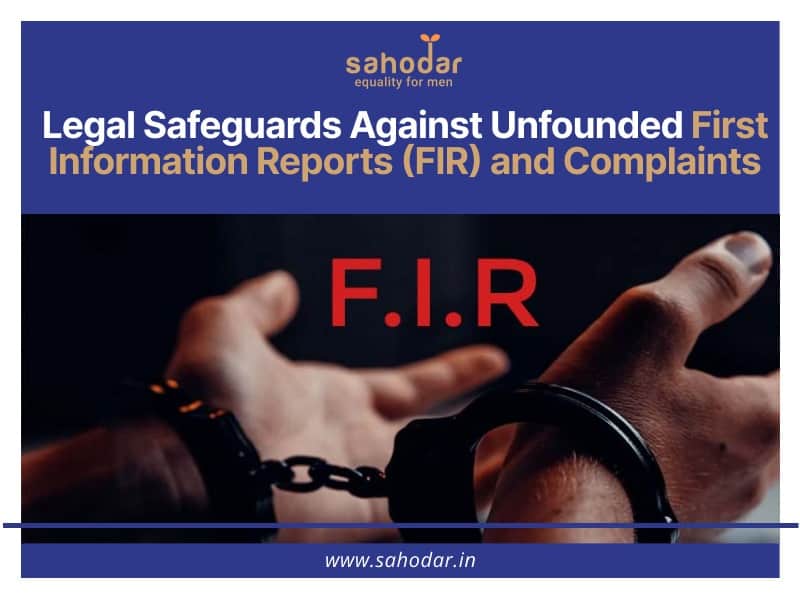Legislation is formulated with the primary objectives of promoting the welfare of the citizenry and ensuring the safety and security of the state. These statutory provisions are meticulously constructed to serve the interests of the populace, with particular attention to the protection of vulnerable segments of society. Nonetheless, instances arise where individuals exploit these legislative instruments, originally enacted for their safeguard, to engage in vexatious litigation and unjustly inculpate innocent individuals, thereby entailing an unwarranted expenditure of the judiciary’s resources.
This pernicious tendency to misuse the legal framework frequently manifests through the creation of counterfeit complaints, in which the First Information Report (FIR) becomes an instrument of vendetta. In response to these exigencies, the legislature has promulgated a specific corpus of legal guidelines to shield bona fide individuals from the depredations wrought by the abuse of these statutory provisions.
An erroneous FIR or spurious complaint conveys the making of fallacious accusations, motivated by malicious intent, by proffering misleading information to law enforcement agencies and concocting a fictitious narrative designed to subject another individual to legal prosecution.
The procedure for the initiation of an FIR entails various mechanisms, comprising:
- The filing of a First Information Report with the police under the aegis of Section 154 of The Code of Criminal Procedure, 1973 (hereinafter referred to as CrPC).
- The submission of a complaint to the superintendent of police pursuant to Section 154(3) of the CrPC.
- The invocation of judicial direction for FIR registration by a magistrate under the purview of Section 156(3) of the CrPC.
- The exercise of magisterial cognizance of an offense in accordance with Section 190 of the CrPC.
- The filing of a private complaint before a Magistrate under the auspices of Section 200 of the CrPC.
The concept of FIR quashing involves the institution of a petition before the High Court aimed at the annulment of the FIR and all concomitant legal proceedings involving the accused. The High Court is vested with the prerogative to quash an FIR, predicated on its satisfaction that the accused is unjustly ensnared, and that the FIR is patently spurious and devoid of substantive merit.
The Code of Criminal Procedure, 1973, elucidates the inherent powers of the High Court under Section 482 in the ensuing terms:
- Section 482 endows the High Court with the authority to act in any manner that serves the cause of justice.
- Under the aegis of this statutory provision, the High Court is vested with the authority to quash an FIR, if it apprehends that the FIR has been falsely promulgated, and contrived with malevolent intent to harass the aggrieved party.
- Should an individual be unjustly embroiled in a non-compoundable offense, recourse may be had to the High Court, wherein the filing of a Writ Petition under Article 226 of the Indian Constitution, in conjunction with Section 482 of the CrPC, is permissible. The onus of substantiating that the FIR has been filed with malicious intent for the harassment of the petitioner lies with the petitioner.
Notwithstanding, it is imperative to underscore that the Supreme Court, through its seminal pronouncement in the case of Madhu Limaye vs. the State of Maharashtra, has delineated salient principles governing the exercise of powers vested in the High Court under Section 482 of the CrPC:
- The recourse to Section 482 is not to be invoked if there exists a specific statutory provision designed to address the grievances of the aggrieved party.
- The exercise of powers under Section 482 ought to be judicious and employed primarily to preclude the abuse of judicial processes or to secure the paramount objective of justice.
- Section 482 powers should not be wielded in contravention of the explicit statutory proscriptions enshrined in other provisions of the legal code.

